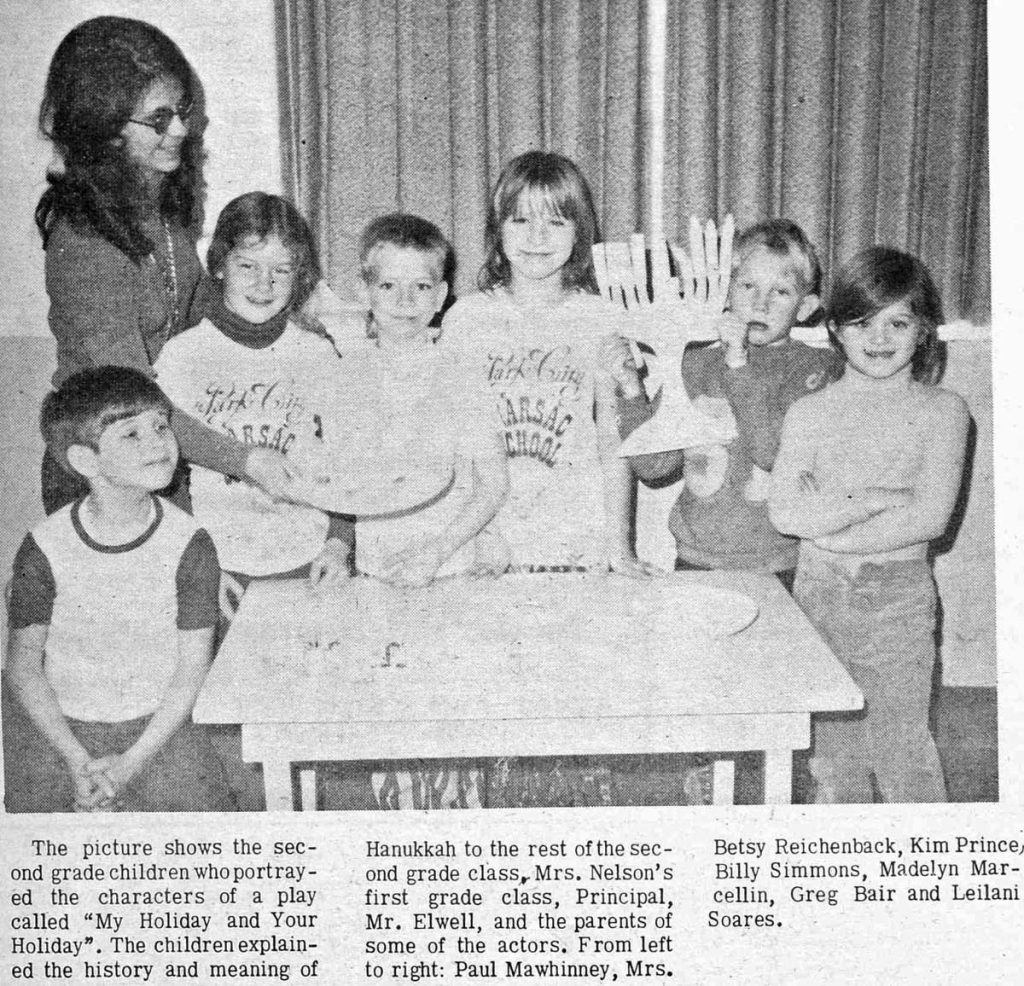Hanukkah has several accepted spellings (Hanukah, Chanukah, Hannukah, etc.). For this article, we will be spelling it as Hanukkah.
Jewish Americans and immigrants first came through and to Utah mostly in the 1850s, starting with the California Gold Rush in 1849. Park City, of course, did not start to become a community until the 1870s, at which time it is likely a few of the town’s early settlers had Jewish roots.
One of the early prominent Jewish settlers in Park City was businessman Julius Frankel, a relative of Blyth Fargo (who operated perhaps the West’s first department store). Frankel ran a men’s clothing store in town.
Another clothier, M.S. Ascheim, settled in Park City before the Great Fire of 1898. His nephew, Solon Spiro, became one of Park City’s most important mining men. Spiro obtained ownership of several claims and operations in Thaynes Canyon and turned them into the Silver King Consolidated Mine. So, while small in number, Jewish Parkites had a large impact on Park City’s daily life and history. These men and their families (and others) likely celebrated Hanukkah, but there are no currently known resources to confirm their private celebrations.
Not until the 1980s, as Park City was becoming a destination ski town, did a Jewish community begin to form, according to Temple Har Shalom. Jews moving to Park City began to host small Shabbat services in their homes, eventually moving into churches and other community spaces as they grew. The first confirmed Passover Seder was held in 1981 by a small group of women. After a few years, residents began to hold High Holy Day services at the Deer Valley Lodge.
It is almost certain that these early groups held private Hanukkah celebrations as well, but they would have had to otherwise travel to Salt Lake City to attend any Hanukkah Shabbat services at a temple. The Museum does not currently have any materials (photographs, documents, diaries, oral histories, etc.) related to Hanukkah celebrations in its collections (and very little on Park City’s Jewish community in general).

Credit: Park Record photo cropped from Utah Digital Newspapers.
One of the first mentions of Hanukkah (in any spelling variation) in the Park Record is from 1972. That seems quite late considering Park City has almost always had Jewish residents. But – coinciding with Temple Har Shalom’s timeline of the growth of a Jewish community in town – references to, holiday greetings for, and advertisements relating to Hanukkah began appearing in the late 1970s and early 1980s. Park Record columnist David Fleisher first began mentioning the holiday in 1976 in conversation with Christmas festivities happening around Park City.
While students might have learned about holidays outside of Christmas prior, the aforementioned 1972 article discusses second graders in Park City learning about the differences between Christmas and Hanukkah by putting on a play called “My Holiday and Your Holiday.” That this event was significant enough for the paper at this time suggests that it was one of the first times students were learning about it. The Newspaper ran an article explaining the history and traditions of Hanukkah in 1978, signaling that more people in the community would be curious about the holiday.
Park City’s Jewish community continued to grow and in 1995 that community was formalized as the Park City Jewish Center, Inc. (later renamed Temple Har Shalom). The first Rabbis were visiting or part time until 2002, when Rabbi Josh Aaronson stepped in to lead the temple. In 2008, the current Temple Har Shalom building opened for worship and community gathering. It has not only provided a permanent space for worship for Park City’s Jews, but it has also hosted other community events and has even served as a Sundance Film Festival screening venue.
The Museum is currently selling menorahs constructed out of skis and ski poles, created by local artist Syd Shoell. Come get yours before they sell out! Happy Hanukkah from the Park City Museum!